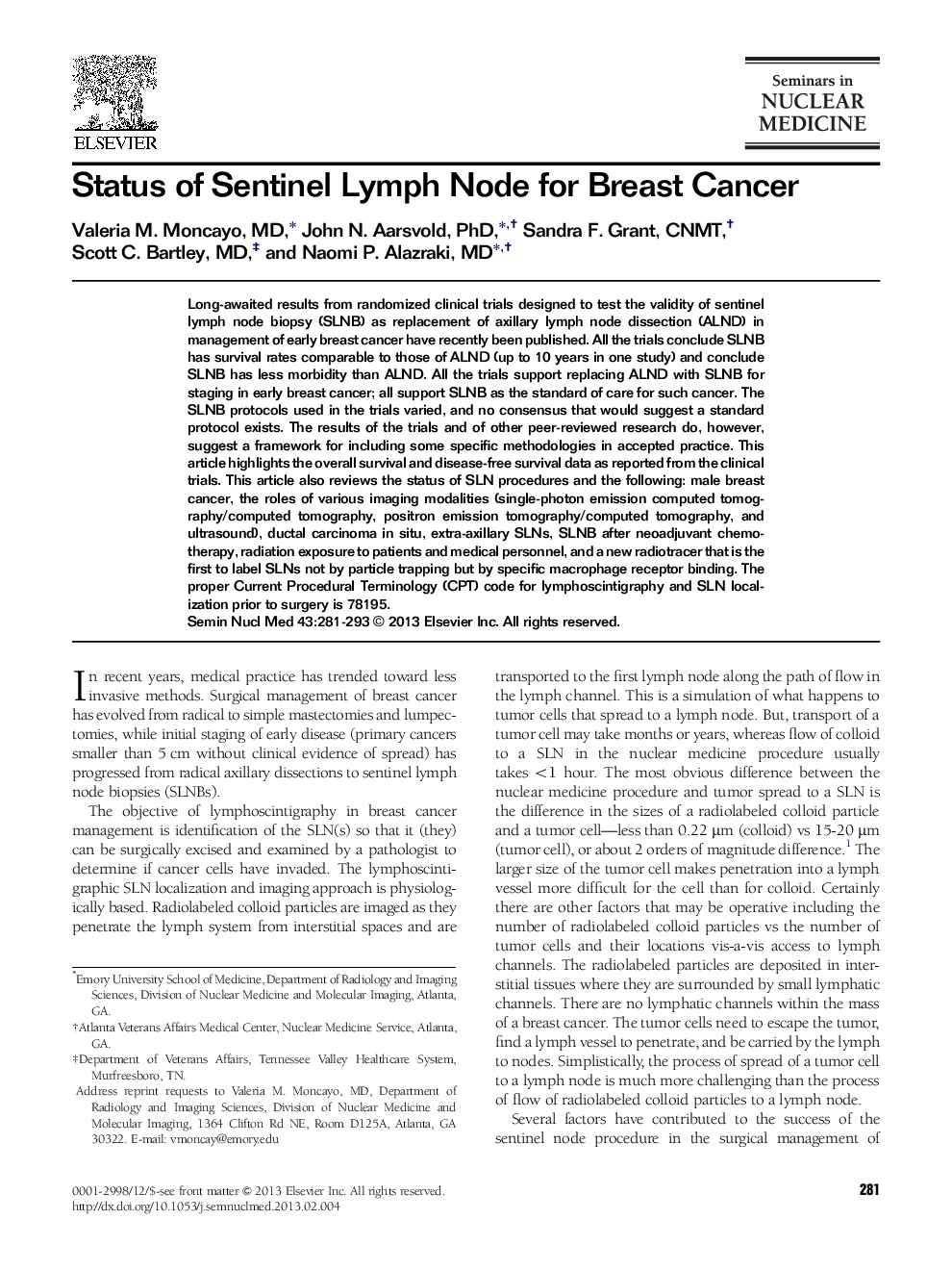| Article ID | Journal | Published Year | Pages | File Type |
|---|---|---|---|---|
| 4251104 | Seminars in Nuclear Medicine | 2013 | 13 Pages |
Long-awaited results from randomized clinical trials designed to test the validity of sentinel lymph node biopsy (SLNB) as replacement of axillary lymph node dissection (ALND) in management of early breast cancer have recently been published. All the trials conclude SLNB has survival rates comparable to those of ALND (up to 10 years in one study) and conclude SLNB has less morbidity than ALND. All the trials support replacing ALND with SLNB for staging in early breast cancer; all support SLNB as the standard of care for such cancer. The SLNB protocols used in the trials varied, and no consensus that would suggest a standard protocol exists. The results of the trials and of other peer-reviewed research do, however, suggest a framework for including some specific methodologies in accepted practice. This article highlights the overall survival and disease-free survival data as reported from the clinical trials. This article also reviews the status of SLN procedures and the following: male breast cancer, the roles of various imaging modalities (single-photon emission computed tomography/computed tomography, positron emission tomography/computed tomography, and ultrasound), ductal carcinoma in situ, extra-axillary SLNs, SLNB after neoadjuvant chemotherapy, radiation exposure to patients and medical personnel, and a new radiotracer that is the first to label SLNs not by particle trapping but by specific macrophage receptor binding. The proper Current Procedural Terminology (CPT) code for lymphoscintigraphy and SLN localization prior to surgery is 78195.
